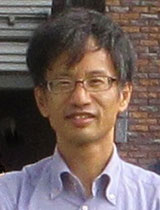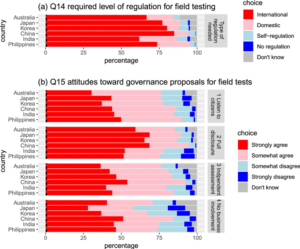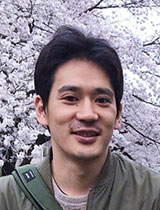A better understanding of non-Western views is needed for inclusive SRM governance

[The views of guest post authors are their own. C2G does not necessarily endorse the opinions stated in guest posts. We do, however, encourage a constructive conversation involving multiple viewpoints and voices.]
It is widely agreed that broad public acceptance is essential to build successful governance for the research, development and potential deployment of solar radiation modification (SRM).
Both supporters and opponents are calling for a public debate to begin now.
Indeed, the mission of C2G is to “catalyse the creation of effective and inclusive governance” through “honest, open, inclusive and informed conversations” with the global community.
For such conversations, the research on public perceptions of SRM—either quantitative opinion surveys or qualitative deliberative dialogues—provides an important insight.
To know what people think about SRM is a first step towards the creation of inclusive SRM governance.
Yet public perception research on SRM has been so far limited largely to the countries of Europe and North America—the so-called WEIRD (Western, Educated, Industrialized, Rich and Democratic) societies.
To help fill this gap, we conducted an online survey of university students in six Asia-Pacific countries: Australia, China, India, Japan, the Philippines, and South Korea.
The results revealed some fascinating differences, and underlined the urgent need for wider consultations.
‘Southern’ Asia-Pacific students more open to SRM than those in ‘the North’
Countries in the Asia-Pacific region are potentially key players in SRM research. The countries we chose showed a diversity of socioeconomic conditions, cultural backgrounds as well as vulnerability to the impacts of climate change.
Focusing on the perception of university students—thereby controlling for educational level—enabled us to make a sensible comparative analysis across countries.
What we found was a clear division of attitudes toward SRM between the North and the South.
While the students in China, India and the Philippines (the South) strongly supported SRM as a potential option, those in Australia, Japan and South Korea (the North) were far more ambiguous and ambivalent— with a significant portion answering that they “neither support or oppose” SRM (see Fig 1a, b).
Similarly, the students in the South were overwhelmingly open to outdoor experiments like the Harvard SCoPEx project, while those in the North were more cautious.

Figure 1. University student’s views on SRM as option (a, b) and on SRM research (c, d) Source: Sugiyama et al. (2020)
Despite some calls for developing countries vulnerable to climate change to lead on SRM research, our respondents said other nations should do so (see Fig. 1d).
A large number of students from three East Asian countries (China, Japan and Korea) viewed that countries with “high technical capacity” should lead. The students from Australia, India and the Philippines were split between the countries with “high CO2 emissions” and those with “high technical capacity”.
Despite these differences, we found overwhelming support across all countries for rules to govern SRM research (especially outdoor experiments), such as the Oxford Principles. These include no involvement of private interest (public good), public participation, information disclosure, and independent assessment (see Fig. 2).

Figure 2. University student’s views on the regulatory requirements for SRM research Source: Sugiyama et al. (2020)
In short, putting proper governance in place was strongly desired by both supporters and opponents of SRM research.
Beyond the Western bias towards global SRM dialogue
Our study showed that students from the South (China, India and the Philippines) were far more open to SRM than those from the North (Australia, Japan and South Korea).
Does this mean people in developing nations are in general more willing to support SRM research, development and even potential deployment?
It is hard to draw such a conclusion from our study alone.
Our survey targeted only university students, not a nationally representative sample. It was also based on one framing of SRM. A different framing would be likely to generate a different response.
More importantly, given that the public has little knowledge about SRM, it is possible that our survey collected only ‘pseudo-opinions’—which are volatile and susceptible to change.
That said, our study offered an important reminder that people hold diverse opinions regarding SRM in different socioeconomic, cultural, and political contexts.
Because of the Western bias in SRM perception research, we do not yet know enough about what people from different backgrounds think about these issues.
And, despite efforts to expand global conversation on SRM governance by C2G and SRMGI (Solar Radiation Management Governance Initiative), there is still a lack of representation from the Global South.
In other words, much of today’s global conversation seems to be built upon an implicit premise that the general public view can be ‘extrapolated’ from opinion in WEIRD societies.
The need for SRM research on the basis of social justice is often claimed by a small group of scientists in the North in the name of global poor in the South.
But we should not make the mistake of interpreting the Western view as proxy for the global one.
Social science research on SRM perception must move beyond this Western bias, and explore more extensively the non-Western perspectives if the goal is to facilitate a genuinely inclusive, global dialogue on SRM governance.
Read the full paper here: Sugiyama, M., Asayama, S., & Kosugi, T. (2020). The North–South divide on public perceptions of stratospheric aerosol geoengineering? A survey in six Asia-Pacific countries. Environmental Communication.

